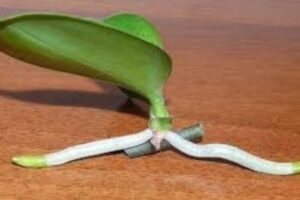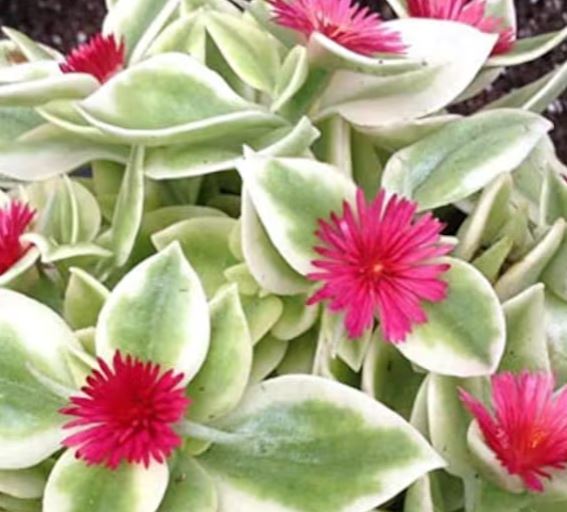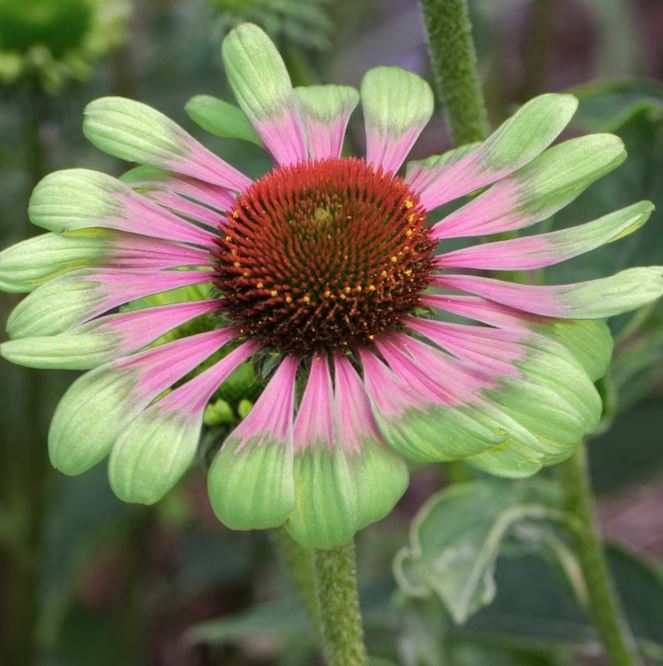How To Grow Orchids from Stem Cuttings (Propagation with Water)

Learn this technique and how to promote growing your orchids from the mother plant while multiplying to get the exact replica of your favorite Orchid!
So below is a video we made on How to Grow Orchids from Stem Cuttings and in water.
How to Grow Orchids
How to Grow Orchids by Propagating
Orchid seeds are not even in question but his is how you want to grow them.
How to Grow Orchids from Stem Cuttings.
Instructions Step by Step propagation for beginners. How to grow orchids from cuttings with pictures below. Let’s find out if you can you root an orchid stem in water or propagating orchids from aerial roots is possible.
Step 1: Gather your orchid stem cuttings while making sure there are nodes on them.
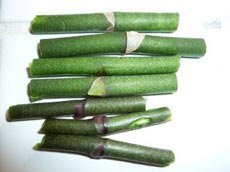
Step 2: So next, place your orchid stem cuttings in sphagnum moss that is wet and wrap them tightly around the orchid cutting.

Also secure the moss around the orchid stems with rubber bands or plant wire.
Orchid Flower
Step 3: So next, you will place your wrapped orchid cuttings into a grow vase/jar (2 liter bottle) and cover with plastic wrap.
Also, make sure to make perforations in the plastic.
Because this will help to create a greenhouse effect.
Step 4: Place your grow jar in a warm area (22 degrees Celcius) or (77 degrees Fahrenheit) with sunlight or under grow lights.
Place a heat mat if the temperatures fall below the recommended levels.
Step 5: Make sure the moss never dries out because it will damage the plant and check on your orchid nodes in about 3 weeks, you should see changes and growth on the orchid stems.
So Next, keep them covered for up to 2 months.
As the roots grow out continue to monitor for moisture.
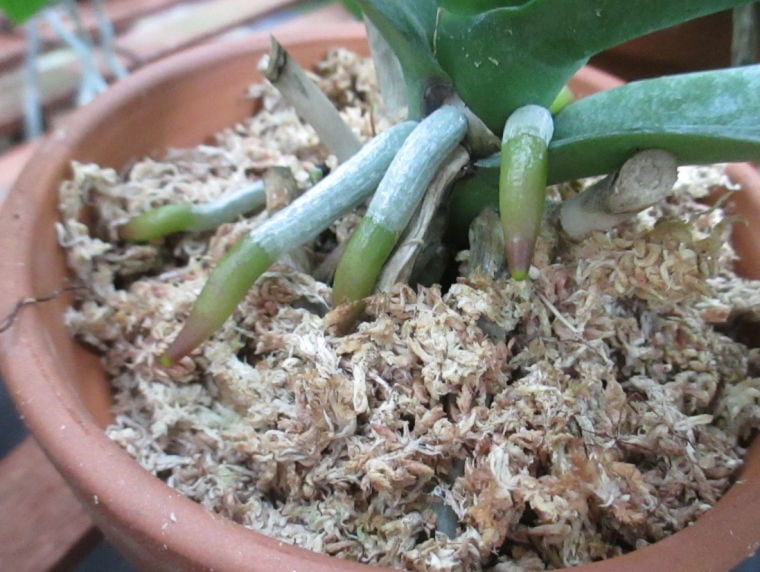
Step 6: once the roots have grown 2 to 3 inches long it is time to cut the new keiki orchid off the mother stem.
Placing it into a permanent place to grow because orchid flowers may take a year before they start flowering for dendrobium phalaenopsis
Orchid Care
Temperature
Orchids do not like temperature fluctuation in their indoor environment.
The ideal comfort temperature is 60-80F days and 55-70F nights.
So now knowing Orchids prefer daytime temperatures of 75 °F or more and nighttime temperatures of 65 °F or more. Is it possible to grow them in your environment?
Also in winter time, this is not always practical to achieve temperatures quite this warm.
So, efforts need to be made to not allow blooming orchids to be exposed to temperatures significantly colder than this.
Because lower temperatures and extreme fluctuations will lead to orchid disease.
Growing Orchids in Light
How to grow orchids with Fertilizer
Repotting Orchids
So to repot orchids you will need a few items first. Some prefer an Orchid Kit to transplant or move their orchids into a new growing pot.
FAQ’s
When your orchid has tightly tangled roots. Generally, orchids can use a repotting yearly.
There is special orchid compost you can pick up at your local nursery. Otherwise, they like a blend of peat, bark, perlite and moss.
Pronounced (Kay Kee) it is a baby clone of the orchid usually forming right from the stem node. The name Keiki is Hawaiian for baby.
2 Years
When it has small leaves and the roots are 2-3 inches long.
Orchids thrive in light but direct sunlight will burn them. That’s why they make a great houseplant. Place them in a warm area with plenty of indirect light such as sunlight.
Orchid flowers last a long time between 60-120 days. This time will depend on many factors but mainly the health of the plant and the growing conditions.
Yes. Most use a rooting tray designed for this. There are specifications and instructions that need to be followed.
It will be very hard to root an orchid stem in just a glass of water by itself. It needs some other things like moss and to be misted. You will want to suspend the area to be rooted just above the water but inside the moss.
Mist with water and keep the moss wet.
When should you repot orchids?
Orchids generally need to be repotted once a year. The best time to repot is just after flowering, or when new growth appears.
You’ll know it’s time to repot your orchid because It has tightly tangled roots.
How do you repot an orchid for beginners?
How to Take Care of Orchids
How to Re-Pot an Orchid with air roots
Orchid repotting beginners (Step by Step Instructions)
- Start by looking for new growth because this is a sign to repot.
- So next, select a pot based on the orchid’s root volume & growing environment. Click here for orchid pots.
- Always use high-quality potting media so your plant will thrive.
- Then, gently unpot the orchid.
- Carefully inspect & clean the roots so you can prevent rot.
- Finally, work in the orchid’s roots & the Orchid potting mix. or Orchid repotting mix.
What soil do I use to repot my orchid?
How to Care for Orchids
As we bring our orchids home we want to give them growing conditions just like their natural habitat because it will promote their health.
They should be potted in a special orchid compost or a mix of moss, bark chips and perlite so the roots can grow well.
Orchids living on branches get soaked regularly by tropical storms, but the water quickly drains away, and orchid compost is similarly free-draining.
*Pro Tip – So you can pick up keiki cloning paste to help assist in producing new keikis
How To Grow Orchids (PINTEREST)

What is a Keiki on an orchid?
Literally translated, “keiki” is Hawaiian for “the little one” because that’s just what keikis are.
In horticulture, a keiki is a plant produced asexually by an orchid plant, especially Dendrobium, Epidendrum, and Phalaenopsis orchids.
The baby plant is an exact clone of the mother plant, sometimes flowering while still attached to the mother.
What does a Keiki look like?
Keikis look like little plants growing on the stem of a parent plant.
On phalaenopsis orchids, they usually occur on the nodes along the stem.
On dendrobiums, they’re typically at the end of the cane because it is where the hormones necessary to produce a keiki accumulate.

How long does it take for a Keiki to grow?
Keikis take about two years to grow. It usually takes about two years for a keiki to become a mature flowering plant.
Continue to care for your growing orchid while keeping it healthy.
When can I remove Keiki?
For this reason, it’s important to wait until a keiki has a few small leaves and roots that are 2-3 inches long.
Only when you observe these things is a safe time to remove a keiki from its mother plant.
To remove a keiki, use a sterile cutting tool and cut the cane about 2 inches above and below the keiki because we don’t want to infect the plant.
How do you encourage Keiki growth?
Plant hormones such as Keiki Paste can be applied to a node on the bloom stem or base to stimulate the growth of a keiki and KeikiRoot can be applied to stimulate root production.
This product also works to stimulate nodes on bulbs of sympodial orchids to create new lead growths.
The keiki paste or plant hormone usually will come in the form of a wax that is hard to remove once applied.
This orchid cloning paste or orchid fertilizer increases your chances of getting a keiki.
Conclusion on growing orchids
Did you learn more about how to grow orchids?
Did this article help you in growing orchids?
How about learning how water can help you grow orchids?
Leave your comment below.


